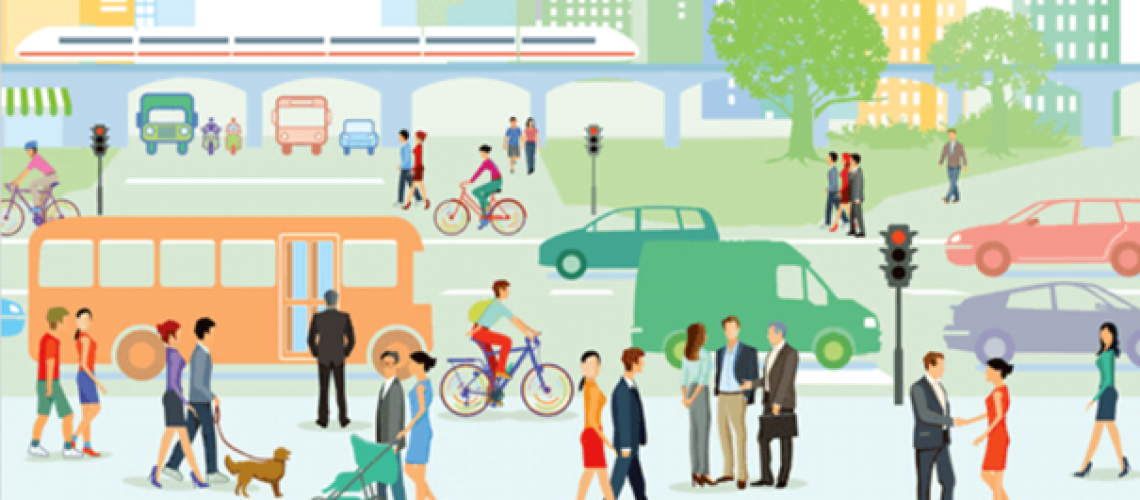A contribution by Nermin Palić, Sarajevo.
The day has finally arrived. On December 30, 2020, the Sarajevo City Council adopted the Plan for Sustainable Urban Mobility of the Sarajevo Canton and the City of Sarajevo – SUMP. Key actors from government institutions, the non-governmental sector, the professional public, the academic community, as well as interested citizens were invited to the online presentation. With this strategic document, Sarajevo has shown its committment to work towards sustainable development, in line with the 2030 Agenda (Global Development Agenda), adopted at the United Nations Conference on Sustainable Development held in New York on September 25, 2015, and sustainable development goals.
The Sarajevo SUMP is the result of the regional project “Sustainable Urban Mobility in the Countries of Southeast Europe II” within the framework of German development cooperation. The project is part of the Open Regional Fund for Southeast Europe – Energy Efficiency (ORF-EE) implemented by GIZ on behalf of the German government.
The main pillars on which SUMP Sarajevo is based are: cycling and walking as an active form of mobility, urban public transport, individual personal transport, city logistics and sustainable spatial planning and urban mobility.
Sarajevo already has a respectable base for developing a sustainable urban environment for mobility. The density of the urban public transport network covers the entire territory of the urban part of Sarajevo. There are various modes of transportation. The cycle path is under construction. One part, of planned 14 km, has already been built and released for usage. In the past 5 years, a bike-sharing service has been introduced in Sarajevo, just like, last year, the e-scooter sharing service (although not quite legally regulated from the safety aspect).
However, these options are not used at their full capacity. One of the key problems is in the very consciousness of the citizens. Bosnia and Herzegovina is a country with a dominant use of passenger cars, with an average age of 16 years (mostly with a Euro 3 engine). This is one of the reasons why Sarajevo Canton has a serious problem with excessive air pollution. In addition to this, there is an obsolete vehicle fleet in public transport in Sarajevo. Transportation services are not integrated, nor is the method of ticket payment. It can also be pointed out that there is no digitized timetable and tracking of vehicles at stops. Furthermore, the culture of using bicycles for transportation purposes has not even existed in the past 6-7 years. In addition, there is an insufficiently developed awareness and vision of cyclists as equal participants in traffic, both by motor vehicle drivers and pedestrians.
Fortunately, all these shortcomings are covered by the adopted SUMP, which will be addressed in the next 5 years. Despite this plan, it is very important and necessary to increase promotional and educational activities using all existing tools to raise citizens’ awareness of the activities pointed out by the SUMP in order to achieve a better quality of life for citizens in terms of safety, health, and environmental protection.
There is a lot of work to be done, but given the vision that is being pursued, the implementation of SUMP creates joy in the eyes of citizens.
The complete SUMP for Sarajevo can be found following this link.
Author: Nermin Palić, Ph.D. (c) Academic Head of Transport/Traffic Engineering Department at University College “CEPS-Center for Business Studies” and founder of UMobSa.com
References:
Plan održive urbane mobilnosti Kantona Sarajevo i Grada Sarajevo, Deutsche Gesellschaft für Internationale Zusammenarbeit (GIZ) GmbH, Sarajevo, 2020.
Mehanović, M., Palić, N.: A model of managing the urban mobility planning process, EMC Review, Apeiron, god VIII, br. II, str. 300, Banja Luka 2018. (DOI: https://doi.org/10.7251/EMC1802300M)
Palić, N., Cinac, Dž.: Analysis of traffic system in Sarajevo in order to focus its further development towards European standards, EDUK@TOR, Sveučilište/Univerzitet Vitez, Vitez, 2015.


